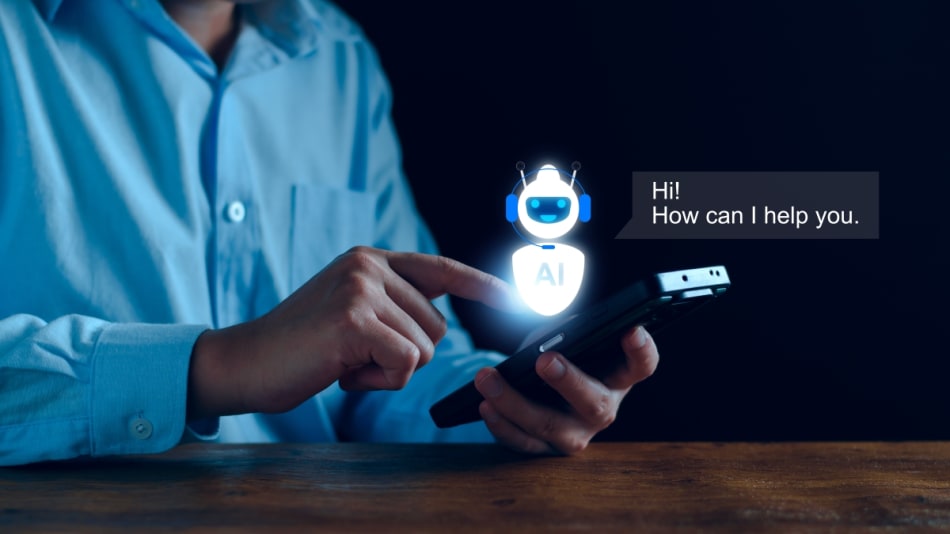
In an age where the first interaction with a brand often starts on your smartphone, mobile experiences have become ubiquitous in our daily routines. They shape all areas of our lives, including how we interact with our finances, healthcare and energy use.
At Waracle, we’ve specialised in state-of-the-art mobile experiences from the App Store’s launch in 2008 to the sophisticated capabilities of today’s mobile apps that feed on the rich sensor data they produce.
However, we believe the most significant mobile capability shift is playing out right now: integrating the new generation of AI into mobile experiences.
Design is changing
How we design mobile experiences profoundly changes as we shift from design-time to run-time intelligence.
For example, until now, digital experiences were envisioned, defined, and locked-in at the time of design. This typically results in a “one size fits all” UI designed to appeal to the average user. Of course, over recent years, we have seen UI’s be able to adapt to different personas, but this intelligence has been largely predefined.

Generative AI, on the other hand, allows for quicker data analysis at scale, enabling more adaptive, personalised experiences to be served dynamically to customers rather than predefined at ‘design-time’ at the beginning of a project.
As generative AI proliferates, human-centred design will be augmented by new toolkits and quicker feedback loops that ultimately benefit the end user.
The shift to real-time and adaptive experiences
One of the challenges of digital product development is fostering continuous adaptation to meet ever-evolving customer needs. Because traditional software cannot cope with ambiguity or uncertainty, we have to pre-plan everything that software must do — whilst doing everything we can to remain “agile”.
Many enterprises found agile and product-oriented approaches difficult to embrace due to constraints such as legacy systems and long change cycles, resulting in adaptation cycles measured in months rather than the days or hours of leaner digital-native startups.
However, as we shift intelligence into the software and closer to the user’s context, we are now transitioning into real-time and adaptive experiences. Breakthroughs in behavioural science and composable digital ecosystems help with this. We’re not just designing for the moment; we’re crafting experiences that evolve instantaneously with the user – an era of hyper-personalisation.

Businesses already know much about their customers but often apply this knowledge sparingly or not at all. The customer experiences of the next 5-10 years will be defined not by their homogeneity but by their individuality. Knowing the context of the individual you are serving will be key, and the sensor-rich, connected consumer devices we all carry around, plus the flexibility of LLM (large language models), will afford us just that opportunity.
This becomes a huge advantage for the large enterprises mentioned earlier as not only could this circumvent the constraints mentioned earlier through real-time adaptation, but it also gives them a huge advantage if they can leverage the proprietary customer data they hold.
Crafting a deep understanding of the individual
The intersection of data and AI allows us to construct unique models and insights for each user. By capturing real-time behavioural data, we understand the context and actions as they happen. AI models can use this to create insights that, enabeling us to create truly personalised and adaptive digital experiences, which are infinitely more intelligent than previous “IF THIS THEN THAT” models.
However, regardless of how well you architect AI into your customer experiences, there will always be tension unless the digital products that deliver said experience are focused on business success.
But how do you do this?
These pillars are still consistent with digital product and service design standards, but AI is moving the goalposts for 1) defining what an engaging experience is, 2) iterating successfully towards that experience, and 3) driving measurable customer and business value.
1. Defining Engaging Experiences
At Waracle, we obsessively focus on blending behavioural science and customer analytics with creativity and technological innovation.
We employ techniques like gamification and nudge theory to maintain user interest. Moreover, we’re integrating empathetic, natural language-based experiences powered by Generative AI. These experiences are engaging, inclusive, accessible… and, in many cases, reassuringly human.
The real-time insights we capture are pivotal in driving experiences that resonate with the user’s specific context and objectives.

2. Successful Iteration
Our approach to iteration has always been that digital product design and engineering is not a ‘one and done’ endeavour. It has always been about clever product people finding incremental user value in the most unlikely places.
The intricacy that occurs in the AI age is that instead of incremental iteration, meaning an app update or new release, it may mean real-time data-led micro changes based on the LLM’s understanding of the context and challenge. This is where our talented consultants and technologists can help in navigating the boundary between human development risk and AI risk.
A bold future awaits, but not one that you should sail towards without the right support and advice.
3. Driving Positive Outcomes
Our end goal is always to drive intuitive user experiences and positive customer and business outcomes.
Using real-time data and AI, we can better understand the user and their needs and create engaging, intelligent experiences. It allows us to understand the user’s goalsuser goal, the context in which they are trying to achieve themit and any specific support they may need, enabling us to guide them towards beneficial results.
This guidance is fully adaptive and personalised, recognising the uniqueness of each individual that your company serves. We stitch together a unique path for each user, leading them to the right outcomes through a personalised experience.
Conclusion
The landscape of intelligent experience design is rapidly evolving, driven by advancements in AI, digital channels, and a deep understanding of human behaviour.
As we embrace these changes, our focus remains steadfast on creating real-time, adaptive experiences that are engaging and result in positive outcomes for users.
The journey towards this new paradigm is challenging but incredibly rewarding as we unlock new potentials in design and user experience. Our clients benefit from our focused approach to this, if you’d like to benefit from our Informed Design Expertise, please get in touch.

Authors
Managing Director
Related

Article • 09 December 2025
From sandbox to squad: AI-enhanced delivery in practice

Article • 05 December 2025
The art of applying stoicism to sales craft

Article • 26 November 2025
Why data infrastructure delivers value regardless of market direction

Article • 24 November 2025
Waracle accelerates growth with acquisition of Sofia-based Hacksoft

Article • 14 November 2025
Waracle secures long-term digital transformation deal with People’s Partnership

